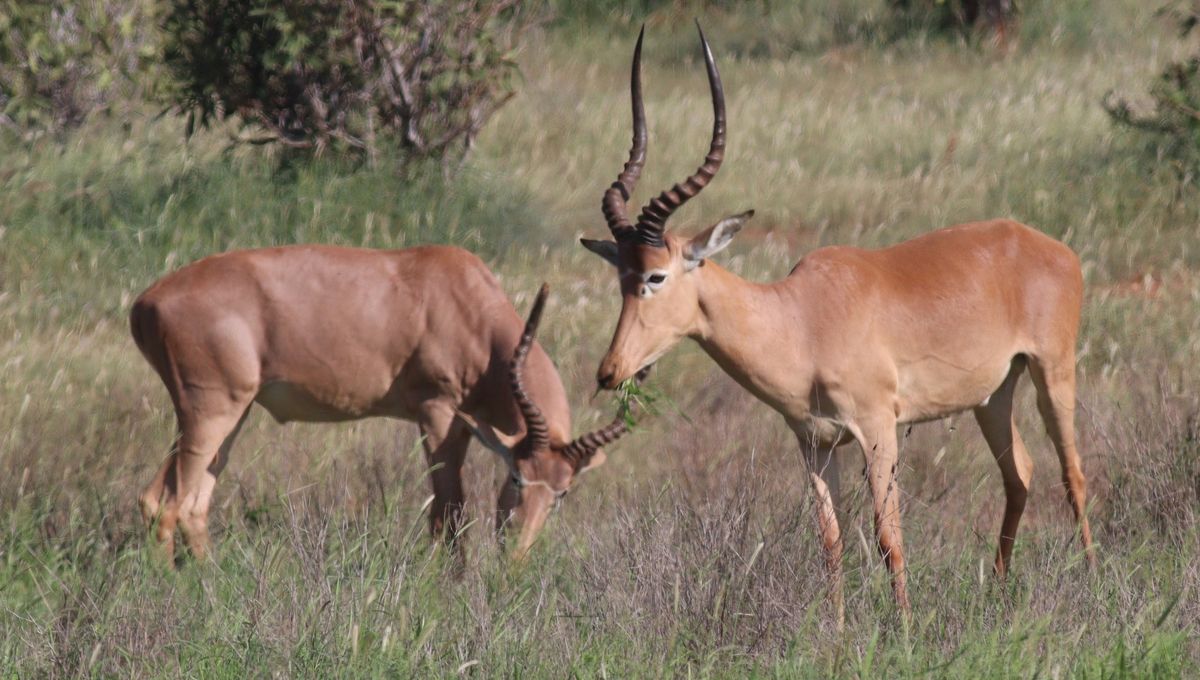
On a small stretch of land near the Kenya-Somalia border lives the world’s rarest antelope, a curious-looking, “four-eyed” animal called the hirola that once roamed the region’s grasslands in the thousands. Today, it’s on the brink of extinction – but how exactly did it get there?
Formally known as Beatragus hunteri, these bizarre members of the Bovidae family are also referred to as the “four-eyed antelope” because, at least from a distance, they look as though they have four eyes. Take a closer peek, however, and you’ll find these aren’t eyes at all; the dark blobs beneath their actual eyes are what’s known as preorbital glands. Found on numerous other bovids like sheep and goats, as well as cervids (true deer), in hirola, they produce secretions that are used to mark their territory.
Their more common name of hirola comes from the Somali word Arawla, which roughly describes the tawny color of their coats. Within Somali pastoral communities in particular, hirola are considered to be good omens for cattle keeping.
Unfortunately, these good omens have disappeared nearly entirely. In the 1970s, the hirola population stood at around 15,000. Today, it has plummeted to less than 500. There’s no captive hirola population either; those few in the wild are the only ones left.
According to the Hirola Conservation Program (HCP), this decline began back in the 1980s with an epidemic of rinderpest. Also known as cattle plague, this highly contagious viral disease was capable of infecting hirola and other wild even-toed ungulates, as well as domestic cattle.
Causing symptoms such as fever, mouth lesions, discharge from the eyes and nose, diarrhea, and dehydration, it could lead to death in just 10 to 15 days. While it’s widely considered as the deadliest cattle disease in history, it also wrought havoc on hirola, wiping out between 85 to 90 percent of the population.
Rinderpest has since been eradicated – marking the first (non-human) animal disease eradication, and only the second viral disease eradication overall, after smallpox – but the hirola population has struggled to recover.
Though other factors like predation and livestock competition are thought to be at play, this lack of recovery has largely been put down to the degradation of the hirola’s grassland habitat, which has been increasingly replaced with tree cover over the last 30 years. As a result, the antelopes have ended up restricted to less than 5 percent of their native range, significantly reducing their access to space and food.
To combat this, conservationists like the HCP have been working with local communities and governments to create and protect over 404,686 hectares (1 million acres) of new habitat for hirola, as well as restoring grasslands in areas close to where they currently live.
There’s still a long way to go before hirola can reach their former numbers – but with continued attention and conservation efforts, let’s hope that they get there.
Source Link: Meet The “Four-Eyed” Hirola, The World’s Most Endangered Antelope With Fewer Than 500 Left